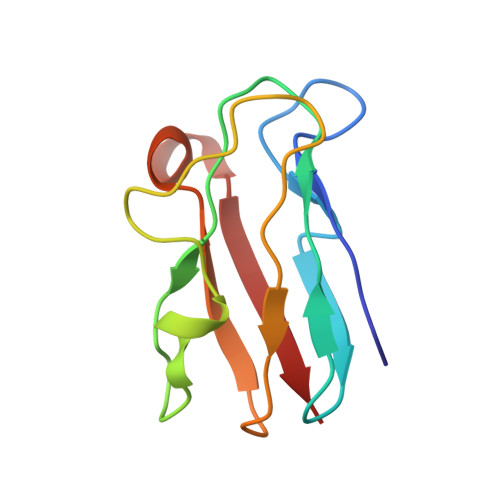Study of electrostatic potential surface distribution of wild-type plastocyanin Synechocystis solution structure determined by homonuclear NMR.
Monleon, D., Celda, B.(2003) Biopolymers 70: 212-220
- PubMed: 14517909
- DOI: https://doi.org/10.1002/bip.10472
- Primary Citation of Related Structures:
1M9W - PubMed Abstract:
Plastocyanin is a small (approximately 10 kDa), type I blue copper protein that works as an electron donor to photosystem I from cytochrome f in both chloroplast systems and in some strains of cyanobacteria. Comparative studies of the kinetic mechanisms of plastocyanins in different organisms show that the electron transfer from photosystem I happens by simple collision in cyanobacteria but through a intermediate transition complex in green algae and superior plants. Previous work has proved that this effect cannot be explained by structural variations across the different plastocyanins but it can be explained by differences in the electrostatic potential distribution at the protein surface. In that case, minor conformational errors at the amino acid side chain level may imply an important effect in the electrostatic potential distribution calculation. In this work we present a high resolution study of side chain conformation by homonuclear NMR for the reduced wild-type plastocyanin Synechocystis using intensity ratios for 2D-NOESY and 2D-H,H-TOCSY cross peaks at different mixing times. We also present the corresponding comparison with different plastocyanin structures and the effect in the electrostatic potential distribution at the protein surface. We discuss the importance of indirect J-coupling information from TOCSY-type experiments as complement for intraresidue distances derived from NOESY experiments in the determination of side chain orientation and stereo-specific assignments.
Organizational Affiliation:
Department of Physical Chemistry, University of Valencia, C/Dr. Moliner, 50, Burjassot 46100 Valencia, Spain.














